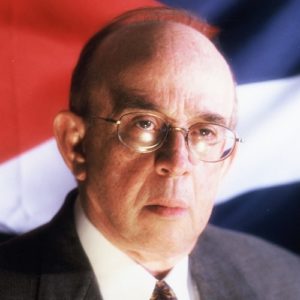 By February 26, 1898, the biggest circulation duel between the New York powerful newspaper publishers, Joseph Pulitzer (The World) and William Randolph Hearst (The Journal) was in full swing. The Americans and their press closely watched events in Cuba. No foreign event had aroused and sustained the American public’s interest like the Cuban War for Independence. It came at a time when the young industrial nation had found a new mode of mass communication in the form of several daily newspapers engaged in a historic race for circulation, in which the public received a daily dose of exaggerated and distorted tales of sensationalist news that sold millions of copies to avid readers.
By February 26, 1898, the biggest circulation duel between the New York powerful newspaper publishers, Joseph Pulitzer (The World) and William Randolph Hearst (The Journal) was in full swing. The Americans and their press closely watched events in Cuba. No foreign event had aroused and sustained the American public’s interest like the Cuban War for Independence. It came at a time when the young industrial nation had found a new mode of mass communication in the form of several daily newspapers engaged in a historic race for circulation, in which the public received a daily dose of exaggerated and distorted tales of sensationalist news that sold millions of copies to avid readers.
Moreover, most American sympathized with the Cubans’ quest for independence from a corrupt, often brutal colonial power. The press fueled the bloody stories and inflamed American public opinion against Spanish ruled in Cuba.
On February 26, The New York World insisted that Cuba must be free and reiterated its preference for war to a dishonorable peace. In its many editorials after the destruction of the Maine it repeated: “Peace, but free Cuba…The American people do not want war, but they do demand justice…Cuba, as the scene of a remorseless and barbarous war of extermination, is a constant reproach to our civilization.”
After de Maine disaster, the Journal wrote, “The warship Maine was split in two by an enemy secret infernal machine.” The New York press broke the one million mark in sales, fueling the nation’s anger. The public’s animosity toward Spain became so intense, it precluded any alternative to that of military conflict. Upon hearing that the Maine had blown up in Havana’s harbor, William R. Hearst put it succinctly to his paper’s editors: “this means war.” Before the Maine disaster the Journal averaged a little over 400,000 copies daily. Two days after the incident (February 17,) the Journal sold 1,025,624 copies and 1,036,140 the following day (February 18).
Many of the journalists were famous even before their Cuba assignment. Among them were novelist Stephen Crane, author of The Red Badge of Courage (1895) (a Civil Wary story about a Union recruit’s psychological reaction to the suffering and fear of war); George Bronson Rea, a pro-Spanish journalist from the New York Herald; Richard Harding Davis, a gifted and powerful storyteller, handsome and witty Philadelphian, and popular member of the glamorous eastern seaboard society, who wrote for Hearst’s Journal and who years earlier, while living in Santiago de Cuba as a guest of reputed “Daiquiri” inventor Jennings Cox, wrote the novel Soldier of Fortune; Frederic Remington, the famous sculptor-painter of the American West noted for his cowboys, Indians and horses, who illustrated the Journal’s war stories; and Sylvester Scovel from Pulitzer’s World, who had the privilege of interviewing rebel Commander-in-Chief Maximo Gomez.
The Yellow press kept feeding heighten stories to American readers’ thirst for scandal and sensationalism. The demand for war against Spain kept growing until it became evident that President William McKinley could not check the public clamor for intervention or resist the call for war by millions of American citizens.
On March 6, McKinley met with the House Appropriation Committee leadership and requested $50 million. He told the congressmen “I must have money ready for war.” The Yellow press was showing its huge power and bias in the national political stage.








